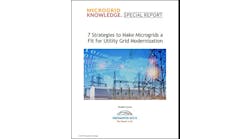By Elisa Wood
August 26, 2010
As suspected, Energy Star appliances do not always live up to their energy savings claims, according to preliminary results of laboratory tests reported his week by the US Department of Energy (DOE).
The DOE began testing the appliances after watchdogs raised serious questions about the federal labeling program. The Energy Star seal appears on hundreds of models of refrigerators, air conditioners, clothes washers and other appliances as proof to consumers that the products meet government standards for energy efficiency and performance.
But because manufacturers self-certify their products, the program is “vulnerable to fraud and abuse,” alleged the federal Government Accountability Office in a March 2010 report. http://www.gao.gov/products/GAO-10-470/. In response, the DOE, which runs Energy Star with the US Environmental Protection Agency, hired four independent labs to test actual energy savings against manufacturers’ claims.
Richard Karney, program leader in testing and verification for the DOE Buildings Technology Program explained findings from the first round of testing in a webinar Aug. 24.
The DOE purchased the appliances directly from stores, and the labs tested to see if they achieve savings within 5% of their claims. With over 40% of tests complete, the DOE reported failure by 16% of the refrigerators, 18% of clothes washers and 29% of room air conditioners.
To be fair, the tests also revealed that a fair number of appliances exceed Energy Star savings requirements.
So what happens now?
The DOE has informed manufacturers who failed in the first round of testing. Next, the federal agency will purchase additional appliances and retest the failed models. Manufacturers can choose to pull their models from the second round of testing. All appliances that fail a second time, or are pulled from the program by manufacturers, will be reported to the EPA for enforcement action. The EPA may then strip the appliances of the Energy Star label.
The EPA will make public the products that are disqualified. It will not name those that passed the test out of concern they will gain unfair market advantage over those appliances that have yet to be tested, Karney said. The DOE plans to test 20% of Energy Star appliances annually with the goal of evaluating all models over five years.
The initial findings underscore the importance that the efficiency industry establishes best practices to verify energy savings, a task that has haunted it for years. The nation’s new emphasis on green energy places efficiency in the spotlight, a good thing if the industry performs, a bad thing if it stumbles. The DOE is especially concerned about verification for appliances because the federal government has allotted $300 million to states for appliance rebate programs.
Cognizant of the problem, private industry groups are wisely stepping up to measure and verify energy efficiency for products and buildings, most recently the Association of Home Appliance Manufacturers http://www.aham.org/ht/a/GetDocumentAction/i/49947.
Such self-policing is crucial to the industry’s longevity. The green energy movement has enemies who would love to portray it as a fraud. Providing consumers with accurate data is the only way to counter them.
Labs testing Energy Star appliances
- BR Laboratories
- CSA International (Toronto) and CSA OnSpeX (Cleveland)
- Intertek Testing Services
- Springboard Engineering
Elisa Wood is co-author of “Energy Efficiency Incentives for Businesses 2010: Eastern States,” http://www.realwriters.net/rew/rtlnkpr.htm.





